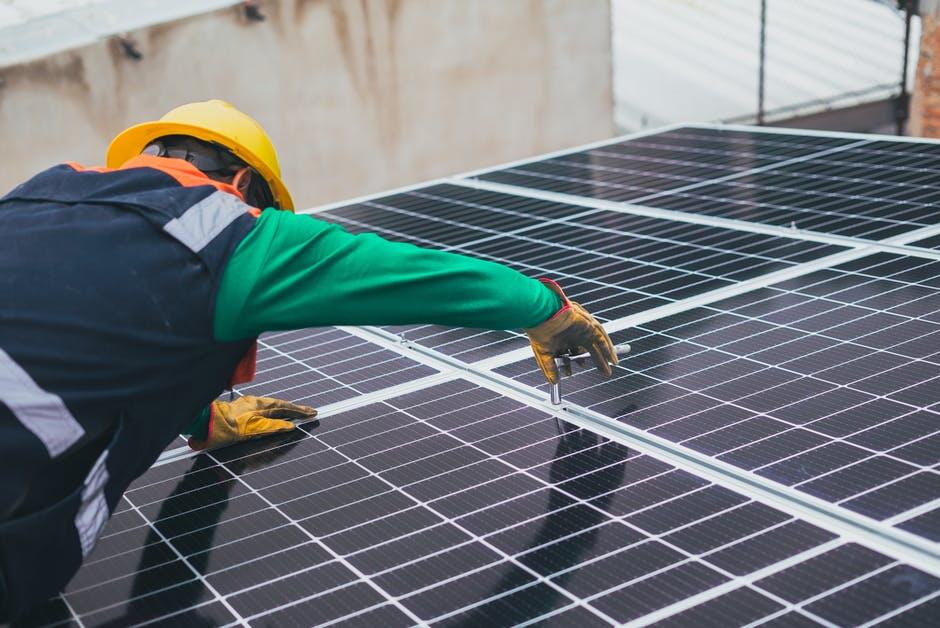Small Changes, Big Savings: Simple Home Energy Solutions for Every Budget
Posted on June 19, 2024 by Logo Design Tips and Tricks

Are you tired of outrageous power bills month after month? Do you want to reduce your carbon footprint and live a more sustainable lifestyle?
Energy efficiency is more than just a buzzword. It’s a practical approach to reducing your utility bills and lowering your environmental footprint. Using energy-saving solutions can make a significant difference in daily living.
In this article, we’ll explore simple home energy solutions that cater to every budget. Whether you’re looking for low-cost tweaks or considering high-budget upgrades, there’s something here for everyone. Read on to learn more!
Low-Budget Solutions
If you’re on a tight budget, there are still plenty of energy-saving solutions that can make a big impact. Here are some ideas to get you started:
Adjust Thermostat Settings
Lowering your thermostat by just a few degrees in the winter and raising it in the summer can lead to significant energy savings. Use programmable thermostats to automatically adjust the temperature when you’re not home.
Use Energy-Efficient Lighting
Switching to LED bulbs can save you a considerable amount on your electricity bill. LEDs use up to 90% less energy than traditional incandescent bulbs and last much longer. These home energy saving solutions can also save you money on replacement bulbs in the long run.
Seal Windows and Doors
Use weather stripping and caulking to seal gaps around windows and doors. This prevents drafts and keeps your home warmer in the winter and cooler in the summer. You can also use draft stoppers at the bottom of doors to prevent air from leaking in or out.
Unplug Idle Electronics
Many electronics consume power even when turned off. Unplug devices like chargers, microwaves, and game consoles when they’re not in use. These may seem like small changes, but they can add up to significant savings over time.
Utilize Natural Light
Maximize natural light during the day to reduce the need for artificial lighting. Open curtains and blinds to allow sunlight to brighten your home.
Install Faucet Aerators
Faucet aerators reduce water flow while maintaining pressure. This helps you save on both water and heating costs.
Use Fans Wisely
Ceiling fans can help circulate air, reducing the need for air conditioning. It can help keep your home cooler in the summer and warmer in the winter. Just remember to turn them off when you leave a room.
Medium-Budget Solutions
If you have a bit more money to work with, here are some energy-saving solutions that may require a slightly higher initial investment:
Upgrade to Energy-Efficient Appliances
Older appliances can be energy hogs, using up unnecessary electricity and driving up your utility costs. Consider upgrading to Energy Star-certified appliances that use significantly less energy.
Install Low-Flow Showerheads and Toilets
Low-flow showerheads and toilets use less water without sacrificing performance. This can lead to significant water and heating cost savings over time.
They can also help reduce your overall water consumption. This is essential in areas experiencing droughts.
Insulate Your Attic
Proper insulation in your attic can prevent heat loss in the winter. It can keep cool air trapped inside during the summer. This reduces the workload on your heating and cooling systems, leading to cost savings.
Upgrade to Smart Home Devices
Smart thermostats, smart plugs, and motion-sensor lights can optimize energy use. They can also provide insights into your consumption patterns. This allows you to make more informed decisions about energy usage.
Replace Old Windows
Old, single-pane windows may be letting in drafts and causing your heating and cooling systems to work harder. Consider upgrading to energy-efficient double or triple-pane windows. These can help reduce heat loss and improve insulation in your home.
Install a Tankless Water Heater
Tankless water heaters provide hot water on demand. They use less energy than traditional water heaters, which are constantly heating a tank of water.
Seal Ductwork
Leaky ducts can waste a lot of energy. Sealing your ductwork ensures that heated or cooled air reaches its intended destination. This can save you money on your heating and cooling costs.
High-Budget Solutions
If you’re willing to make a larger investment, here are some energy-saving solutions that may require more significant changes or renovations:
Install Solar Panels
Solar panels harness the power of the sun to generate electricity for your home. They can significantly reduce your reliance on traditional energy sources and lower your utility bills.
They can also earn you tax credits and incentives. This makes them a practical long-term investment.
If you are interested in this option, you can check out the solar power for Topeka homes. They offer professional solar panel installation services in Topeka, Kansas.
Consider Passive Solar Design
Passive solar design utilizes the sun’s energy to naturally heat and cool a home. This involves strategic placement of windows, insulation, and building materials.
While this may require some renovations or new construction, it can ultimately lead to significant energy savings and a more comfortable living environment.
Consider Energy-Efficient Landscaping
Strategically planting trees around your home can provide natural shade in the summer. These advanced home energy solutions reduce cooling costs while adding to the aesthetic appeal of your property. Planting shrubs and bushes along the perimeter of your home can also help insulate it.
Upgrade to a High-Efficiency HVAC System
Heating and cooling account for a significant portion of your energy costs. Consider upgrading to a high-efficiency HVAC system that uses less energy to operate. HVAC systems with a higher SEER (Seasonal Energy Efficiency Ratio) rating can save you money on your utility bills in the long run.
Invest in Energy Storage
Energy storage systems, such as batteries, allow you to store energy and use it during peak demand times. This can help lower your overall energy costs and reduce strain on the power grid.
It can also provide backup power during outages. This makes it a practical and efficient long-term investment.
Home Energy Solutions: Optimizing Your Energy Usage
No matter your budget, there are plenty of home energy solutions that can help you lead a more sustainable lifestyle. From simple tweaks to high-budget upgrades, these solutions can make a significant impact on both your wallet and the environment.
So start making changes today and see the benefits for yourself! Remember, every small step towards energy efficiency counts.
Want to explore more time-saving solutions and life hacks? Don’t hesitate to peruse our other insightful articles that aim to make your life easier and more efficient.
The Benefits of Investing in Affordable Local SEO for Your Website
Posted on June 17, 2024 by Logo Design Tips and Tricks

Small and medium-sized businesses make up 90% of companies worldwide. If you own a smaller business that operates locally, you need to use local-specific marketing strategies rather than trying to imitate larger companies.
Investing in affordable local SEO can help give your company the best chance of success at the local level. Here are the benefits of investing in affordable local SEO for your website.
Boost Online Traffic
Working with a local SEO company will help improve your site’s search traffic on Google and other search engines by increasing rankings and ensuring it appears more often. As a result, more people will click through to your website. This will potentially lead to new leads and sales.
Unlike typical national SEO, local SEO won’t just help you get more traction online but will target those who actually live close to where you do business. If you’re in Perth, for example, working with the best seo agency in perth, AU can be well worth it.
Local SEO helps improve visibility as well. As a result of using local SEO services for small businesses, your business name and website will appear more often online. Not only will your website appear more often in search engines but it will also appear on other websites as well. Link and citation building will also be needed as part of improving SEO and will help grow your presence online.
Establish Your Brand
When building more visibility online, you’ll also improve brand awareness and trust with customers. If your name appears more often in search engines, potential customers and past customers will begin to see you as more of an authority in your industry.
In addition to this, SEO often involves getting more online reviews from customers. This will also help improve your reputation.
Reduce Marketing Costs
Hiring a cheap SEO company can also help you save money on advertising and marketing costs. SEO offers an increased ROI compared to other advertising methods, helping to serve your business in the long term rather than the short term.
Unlike paid advertising such as PPC ads or traditional ads such as billboards, you can keep getting results as time goes by. Even once you stop paying for local search engine optimization services, you’ll likely continue to experience the benefits of the service you used.
Stay Competitive
Local SEO outsourcing can also help you stay competitive. Since many competing businesses won’t be using SEO and online marketing strategies, you can get ahead of them by implementing a local SEO strategy.
When you go digital and use SEO tactics, you’ll be giving your business a competitive advantage that allows you to more quickly gain customers and build trust with them in your area.
Investing in Affordable Local SEO
If you want to grow your business and get more local customers, consider hiring an affordable local SEO company. Local SEO can help you gain search traffic, improve brand awareness, and reduce overall marketing costs.
Want to learn more about SEO and digital marketing tactics? Browse our blog to find more interesting and useful information.
The Benefits of Hiring a Professional Specialty Cleaning Services Company
Posted on June 17, 2024 by Logo Design Tips and Tricks

The average American spends almost 13,000 hours of their life cleaning – the equivalent of 1.5 years.
Our time on earth is finite, so if this number scares you, it might be time to hire specialty cleaning services. By letting a professional take care of your cleaning duties, you can free up your time while enjoying a cleaner and more comfortable home.
Today, we’ll look at some of the biggest benefits of hiring housemaid services. Hiring a maid might sound like a frivolous expense, but keep reading and you’ll see that the benefits heavily outweigh the cost.
Enjoy Your Down Time
Firstly, cleaning agencies are there to help you rediscover your free time. Many Americans spend at least 40 hours per week at their job, then come home to a cluttered, dirty house that they have to spend more time cleaning.
Think about how much time you have to sit down and watch television, read a book, or go outside. Your free time shouldn’t be spent working. With professional cleaners helping, you can free up several hours per week to do whatever you want.
A Cleaner Home
House cleaning services are staffed with highly trained professionals who know how to give your home a deep clean. They’re also given the equipment to deal with things you can’t, whether getting into the nooks and crannies or scrubbing long-standing stains.
Cost-Effective
The cost of getting a house cleaning in Jupiter, FL is more cost-effective than you might realize. If you think about the state of your home over time, you’ll understand how dirt and debris can affect your home, appliances, and furniture.
For example, when you’ve got dirt and debris floating around in your home, your HVAC system has to work harder to condition the air. This puts unnecessary strain on your system, which will lead to pricey repairs and even premature replacement.
Dirt can also work its way into the fibers of your furniture. Over time, they’ll start to degrade and you’ll need to get new couches, chairs, and beds. A regular professional cleaning will stop this from happening, preserving all of your property.
Custom Plans
What’s great about most professional cleaners is that there are different types of cleaning services. If you want occasional one-off home cleanings, that’s an option. It’s not the only option, as there are many ways to approach it.
You can also create a cleaning plan that has someone showing up every month to clean different parts of your home. If you want to lower cleaning costs, you can take care of the little things yourself, then bring in a cleaner to do the bigger jobs.
Hire Specialty Cleaning Services ASAP
Now that you understand some of the unsung benefits of hiring specialty cleaning services, it’s time to revive your home and take back your life. A professional cleaner is an affordable and sensible way to improve your physical and mental health while taking some work off your plate.
Did you find this post helpful? Visit us again for more articles on home care and business.
How to Streamline Your Writing Process with an Article Maker
Posted on June 17, 2024 by Logo Design Tips and Tricks

Writing content quickly and efficiently can be an enormous challenge. This is especially true when you have tons of ideas but not enough time. Whether it’s for a blog, a report, or more, getting your thoughts on paper clearly and coherently is tough.
This is where an article maker comes in handy.
It helps streamline your writing process, making it easier and faster to craft quality content. This blog post will share several tips that can help you make the most out of your article maker. This ensures your writing process is as smooth as butter.
Create a Robust Content Strategy
When using an article maker, outline your primary goals and the key messages you want to convey to your audience. This will guide the tool in generating content that aligns with your objectives.
Identify your target audience and understand their needs and preferences. Also, incorporate keywords and topics that are trending in your industry.
Finally, set a clear timeline for your content creation process. This will keep you on track and ensure you execute your content strategy effectively.
Leverage the Power of Article Generator
An article generator uses artificial intelligence to produce content based on the inputs you provide. To get the most out of it, provide clear and detailed instructions.
This includes specifying the tone, style, and specific points you want to cover in your article. Even though the tool can produce high-quality drafts, personalizing and refining the content will give it your unique touch.
Using an article generator saves you time on drafting. This allows you to focus on the creative aspects of writing and make your content stand out.
Conduct Efficient Research
Behind every brilliant piece of writing is thorough research. However, research can be time-consuming. To make your research process more efficient, use your article maker to gather basic information and relevant data on your topic.
This can serve as a foundation for your article.
When looking for more in-depth information, use academic journals, Wikipedia, and more. Highlight key points and data that will support your argument or narrative. By streamlining your research process, you can create a more engaging article that readers will enjoy.
Review and Refine Your Work
The last step in streamlining your writing process with an article maker is perfecting your work. First, read through the draft to ensure it flows logically and addresses the topic comprehensively.
Look out for any grammatical errors or awkward phrasing. Tools and apps designed for grammar and style checks can be helpful here.
You can also ask for feedback from colleagues or friends. The goal is to produce a concise, clear, and interesting article that resonates with your audience.
Enhancing Your Writing with an Article Maker
Leveraging an article maker can significantly streamline your writing process, making it faster and more efficient. By following these tips, you can produce high-quality content that engages and informs your audience. Embrace technology and let an article maker transform how you approach writing.
For more writing tips and tricks, check out the latest articles on our blog!








